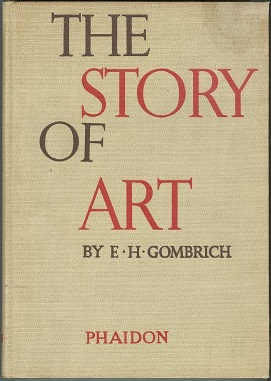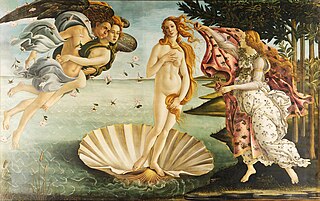Iconology is a method of interpretation in cultural history and the history of the visual arts used by Aby Warburg, Erwin Panofsky and their followers that uncovers the cultural, social, and historical background of themes and subjects in the visual arts. Though Panofsky differentiated between iconology and iconography, the distinction is not very widely followed, "and they have never been given definitions accepted by all iconographers and iconologists". Few 21st-century authors continue to use the term "iconology" consistently, and instead use iconography to cover both areas of scholarship.

Giovanni Morelli was an Italian art critic and political figure. As an art historian, he developed the "Morellian" technique of scholarship, identifying the characteristic "hands" of painters through scrutiny of diagnostic minor details that revealed artists' scarcely conscious shorthand and conventions for portraying, for example, ears. He was born in Verona and died in Milan.

Carlo Ginzburg is an Italian historian and a proponent of the field of microhistory. He is best known for Il formaggio e i vermi, which examined the beliefs of an Italian heretic, Menocchio, from Montereale Valcellina.
Arnaldo Dante Momigliano, KBE, FBA was an Italian historian of classical antiquity, known for his work in historiography, and characterised by Donald Kagan as "the world's leading student of the writing of history in the ancient world".

Sir Ernst Hans Josef Gombrich was an Austrian-born art historian who, after settling in England in 1936, became a naturalised British citizen in 1947 and spent most of his working life in the United Kingdom.

The Warburg Institute is a research institution associated with the University of London in central London, England. A member of the School of Advanced Study, its focus is the study of cultural history and the role of images in culture – cross-disciplinary and global. It is concerned with the histories of art and science, and their relationship with superstition, magic, and popular beliefs.

The Story of Art, by E. H. Gombrich, is a survey of the history of art from ancient times to the modern era.

Aby Moritz Warburg was a German art historian and cultural theorist who founded the Kulturwissenschaftliche Bibliothek Warburg, a private library, which was later moved to the Warburg Institute, London. At the heart of his research was the legacy of the classical world, and the transmission of classical representation, in the most varied areas of Western culture through to the Renaissance.
Depiction is reference conveyed through pictures. A picture refers to its object through a non-linguistic two-dimensional scheme, and is distinct from writing or notation. A depictive two-dimensional scheme is called a picture plane and may be constructed according to descriptive geometry, where they are usually divided between projections and perspectives.
Francis James Herbert Haskell, was an English art historian, whose writings placed emphasis on the social history of art. He wrote one of the first and most influential patronage studies, Patrons and Painters.
Michael David Kighley Baxandall, FBA was a British art historian and a professor emeritus of Art History at the University of California, Berkeley. He taught at the Warburg Institute, University of London, and worked as a curator at the Victoria and Albert Museum. His book Painting and Experience in Fifteenth-Century Italy was profoundly influential in the social history of art, and is (2018) widely used as a textbook in college courses.
Edgar Wind was a British interdisciplinary art historian, specializing in iconology in the Renaissance era. He was a member of the school of art historians associated with Aby Warburg and the Warburg Institute as well as the first Professor of art history at Oxford University.
Leopold David Ettlinger was a Warburg Institute historian of the Italian Renaissance and UC Berkeley Art Department Chair, from 1970 to 1980. He wrote some of his books together with his third wife Helen Shahrokh Ettlinger.
John B Onians, FSA is Professor Emeritus of World Art at the University of East Anglia, Norwich and specialised in architecture, especially the architectural theory of the Italian Renaissance; painting, sculpture and architecture in Ancient Greece and Rome; Byzantine art, material culture, metaphor and thought; perception and cognition, and the biological basis of art. His recent work has been instrumental in the establishment of Neuroarthistory as a distinct set of methodologies.
Svetlana Leontief Alpers is an American art historian, also a professor, writer and critic. Her specialty is Dutch Golden Age painting, a field she revolutionized with her 1984 book The Art of Describing. She has also written on Tiepolo, Rubens, Bruegel, and Velázquez, among others.
Gertrud Bing was a German art historian and director of the Warburg Institute.

Friedrich "Fritz" Saxl was the art historian who was the guiding light of the Warburg Institute, especially during the long mental breakdown of its founder, Aby Warburg, whom he succeeded as director.

Art history is the study of aesthetic objects and visual expression in historical and stylistic context. Traditionally, the discipline of art history emphasized painting, drawing, sculpture, architecture, ceramics and decorative arts; yet today, art history examines broader aspects of visual culture, including the various visual and conceptual outcomes related to an ever-evolving definition of art. Art history encompasses the study of objects created by different cultures around the world and throughout history that convey meaning, importance or serve usefulness primarily through visual representations.

Early Netherlandish Painting: Its Origins and Character is a 1953 book on art history by Erwin Panofsky, derived from the 1947–48 Charles Eliot Norton Lectures. The book had a wide impact on studies of Renaissance art and Early Netherlandish painting in particular, but also studies in iconography, art history, and intellectual history in general. The book is particularly well-known for its iconographic treatment of Van Eyck's Arnolfini Portrait as a kind of marriage contract, a hypothesis advanced by Panofsky as early as 1934. The book remains influential despite its reliance on black-and-white reproductions of paintings, which led to some errors of analysis.

Pathosformel or "pathos formula" is a term coined by the German art historian and cultural theorist Aby Warburg (1866–1929) in his research on the afterlife of antiquity. It is described as "the primitive words of passionate gesture language" and the "emotionally charged visual trope[s] that recur throughout images in Western Europe. While the term is associated with formalism, Warburg restricts the concept to cultural-psychological themes, as he held "an honest disgust of aestheticizing art history". Despite its name, pathosformel does not provide a calculable formula to identify visual links among images. Instead, it calls on collective and individual imagination to find such links apart from those based on age, type, size, or origin. In historian Kurt Forster's words, "it exerts its control over existing figurations in a way that endows them with new, 'sign-giving' qualities." The art historian Ernst Gombrich, described pathosformel as "the primeval reaction of man to the universal hardships of his existence [that] underlies all his attempts at mental orientation".










